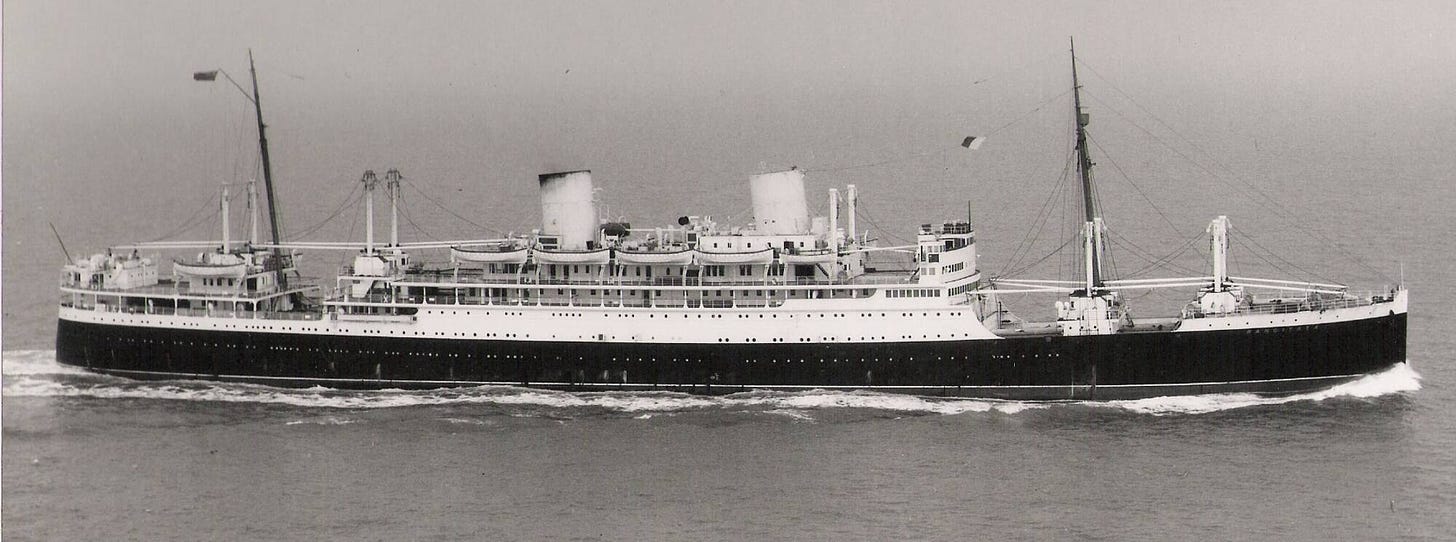Captain Lionel Upton, commander of the 16,700-ton Royal Mail Ship Rangitane, came onto the bridge in his pyjamas. It was 3.30 am.
Lookouts had spotted a couple of unlit ships, one crossing about a kilometre across his bow and another on the port beam. As his eyes adjusted, Upton spotted a third. It was 27 November 1940 and Rangitane was two days out from Auckland, heading for Panama and onto England. The 11-year-old ship was one of sister 'Rangi' ships built for the London registered New Zealand Shipping Company, Rangitiki and Rangitata; nick-named Tane, Tiki and Tata. Each could carry nearly 600 passengers, 200 crew and substantial cargo.
A Rangi ship departed every fourth Thursday for New Zealand making the journey in 35 days via the Panama canal. Each ship operated a regular cycle of 20 weeks between departures from London. Following five weeks at sea, it took four weeks to offload and load cargo in New Zealand, five weeks to return and six weeks to offload and load cargo in England for the next round trip. Their regularity may have been Rangitane’s ending.
A month before Upton’ pyjama effort, Rangitane had sailed from Liverpool with children bound for New Zealand to escape Nazi bombing. As she was preparing to leave, news came in that the passenger ship SS City of Benares had been sunk. It had been carrying 90 children evacuated from Britain to Canada. Seventy-seven children died. It resulted in an immediate cancellation of the plan to relocate children aboard. Rangitane off-loaded the children and headed to New Zealand. In Wellington and Auckland she took on butter, cheese, frozen pork and mutton, cocoa beans, wool, hide, barrels of oil and 45 bars of silver. Waterside workers had been on strike, so loading was slow.
Keep reading with a 7-day free trial
Subscribe to Michael Field's South Pacific Tides to keep reading this post and get 7 days of free access to the full post archives.




